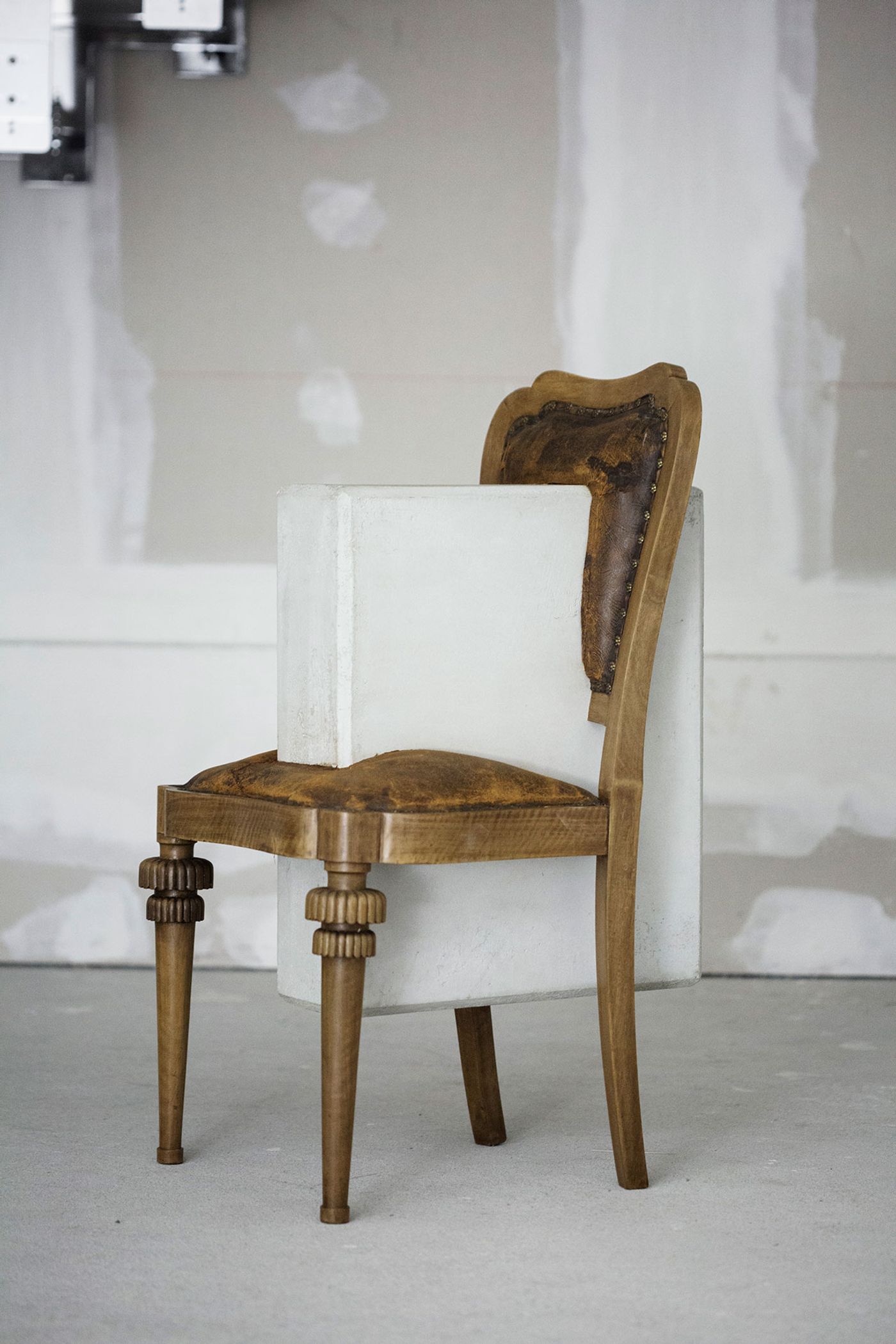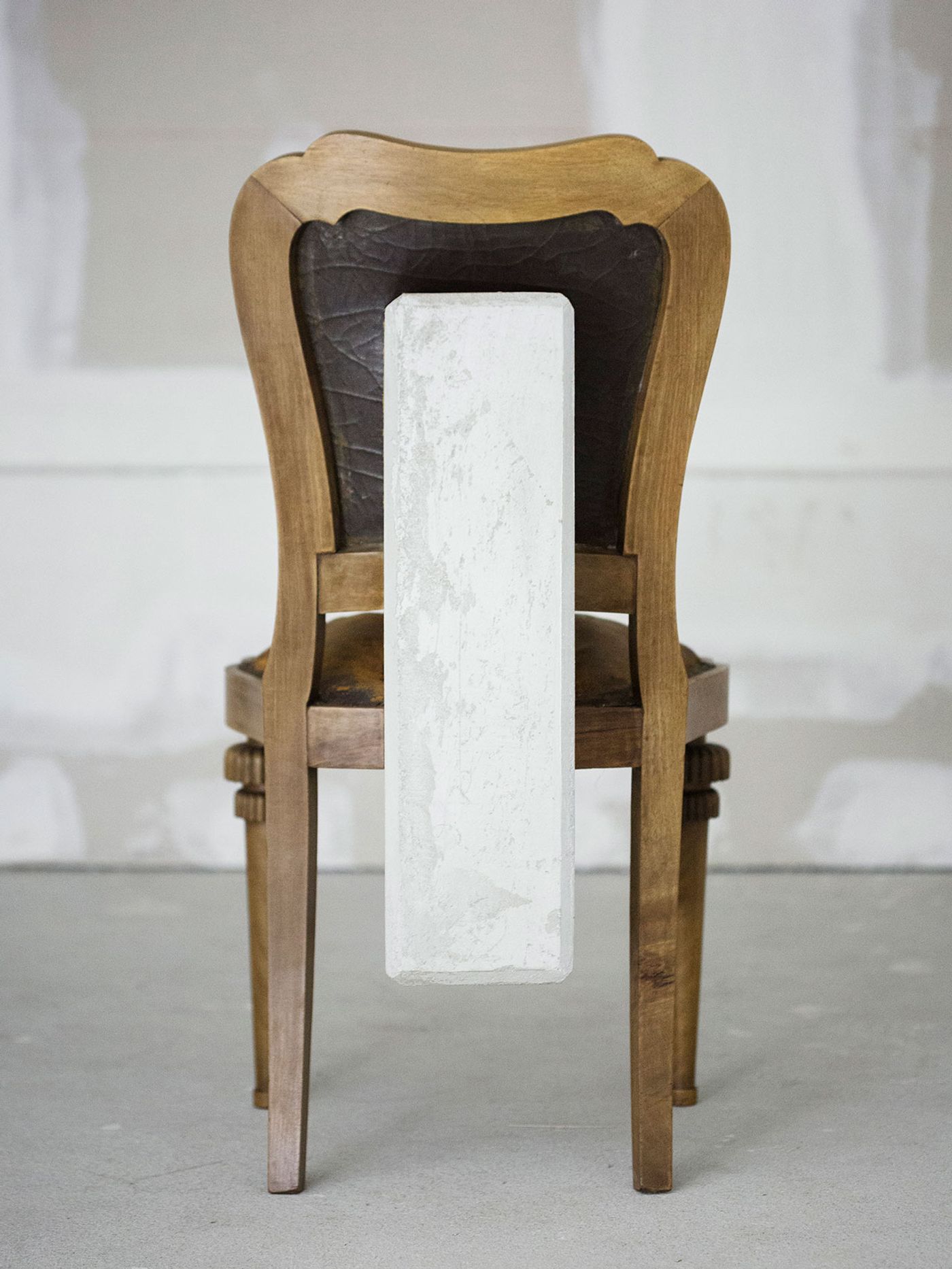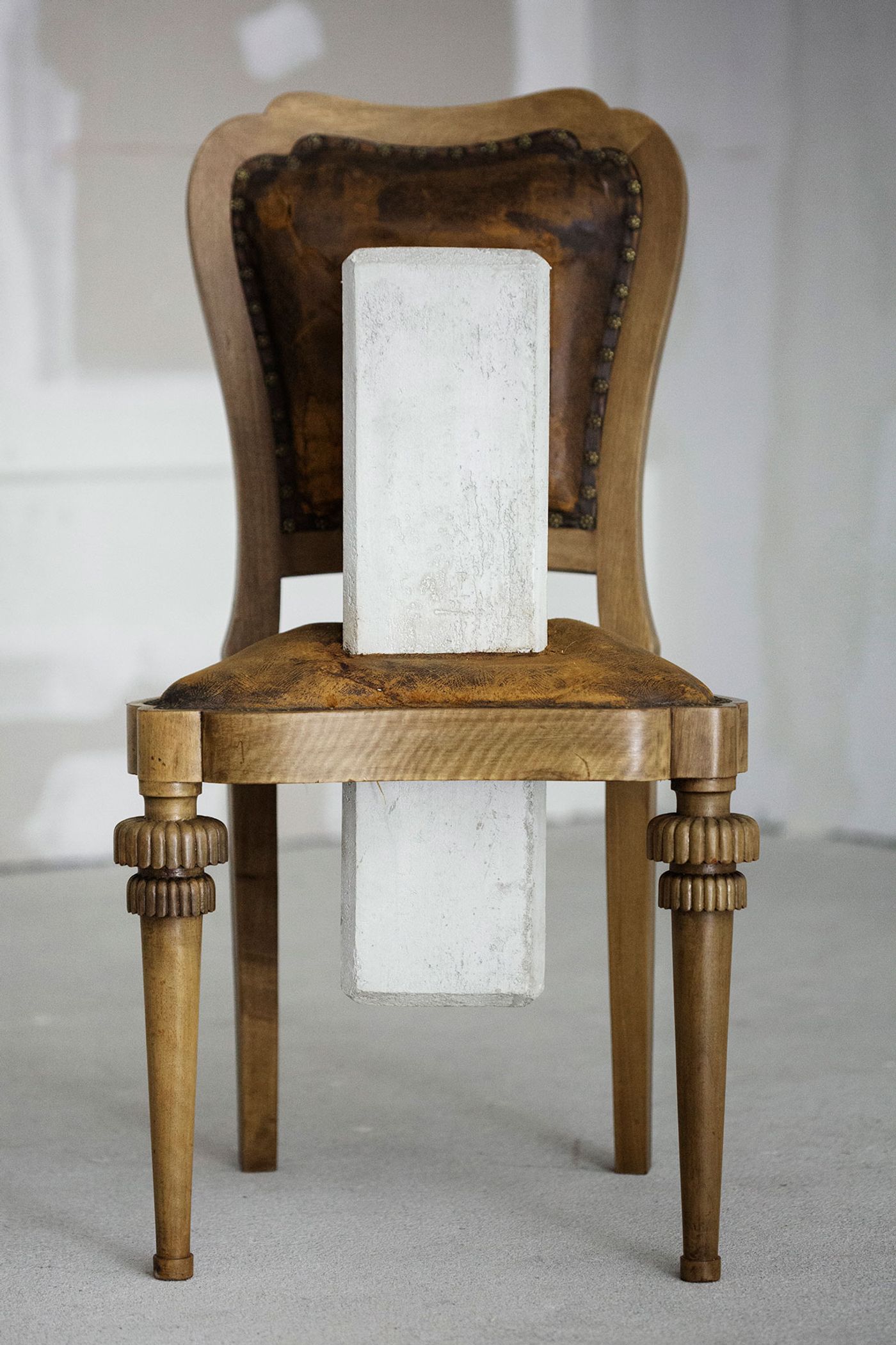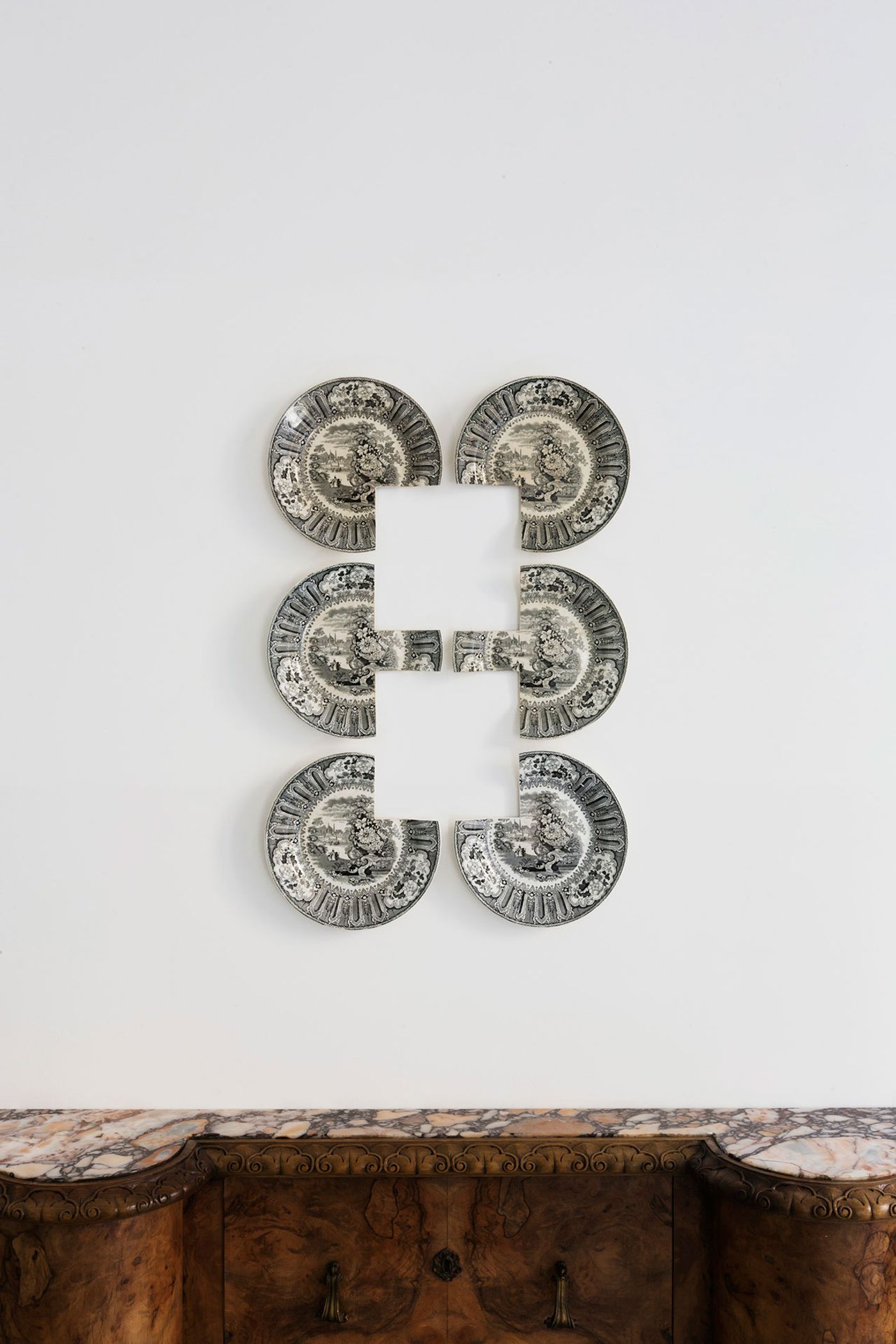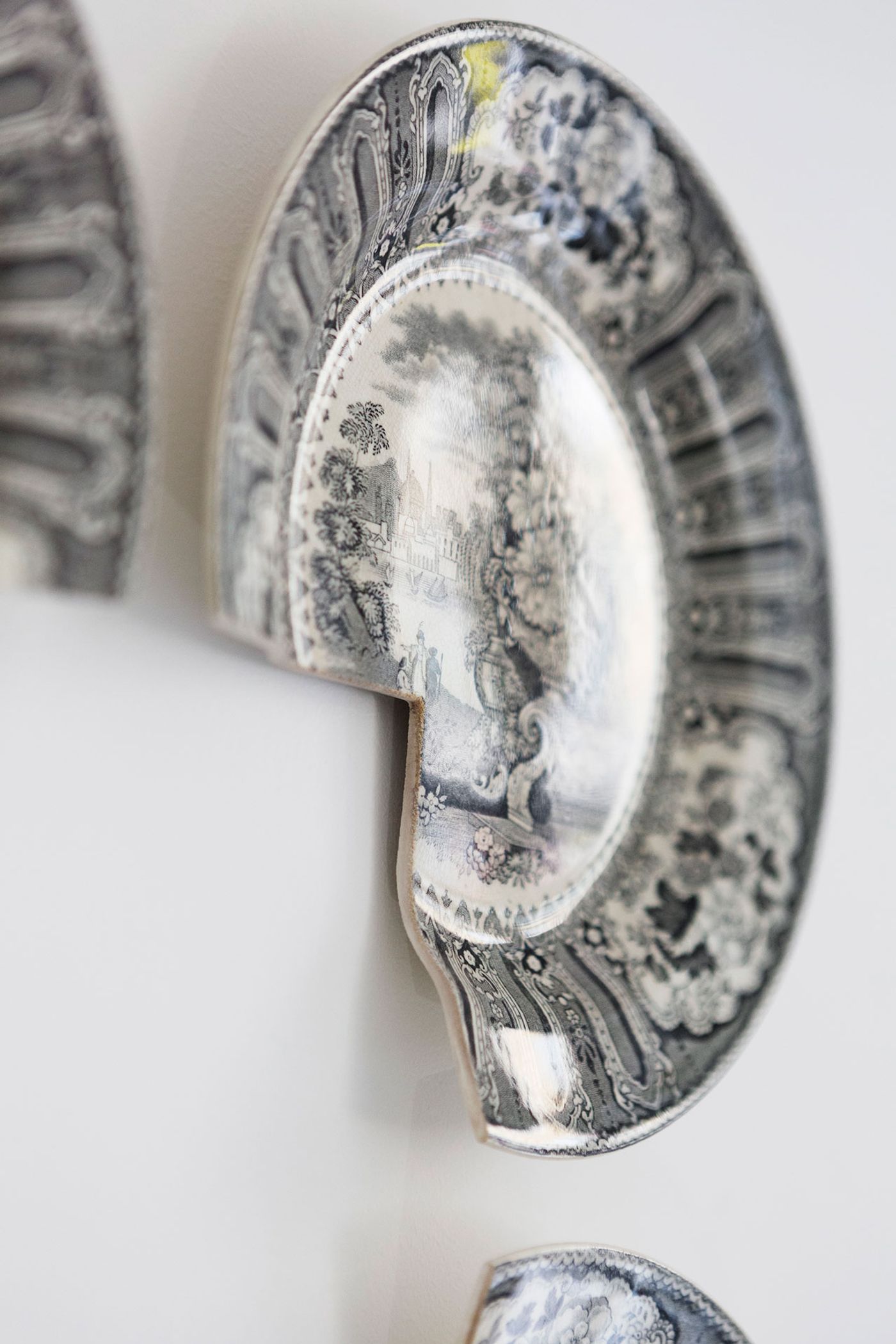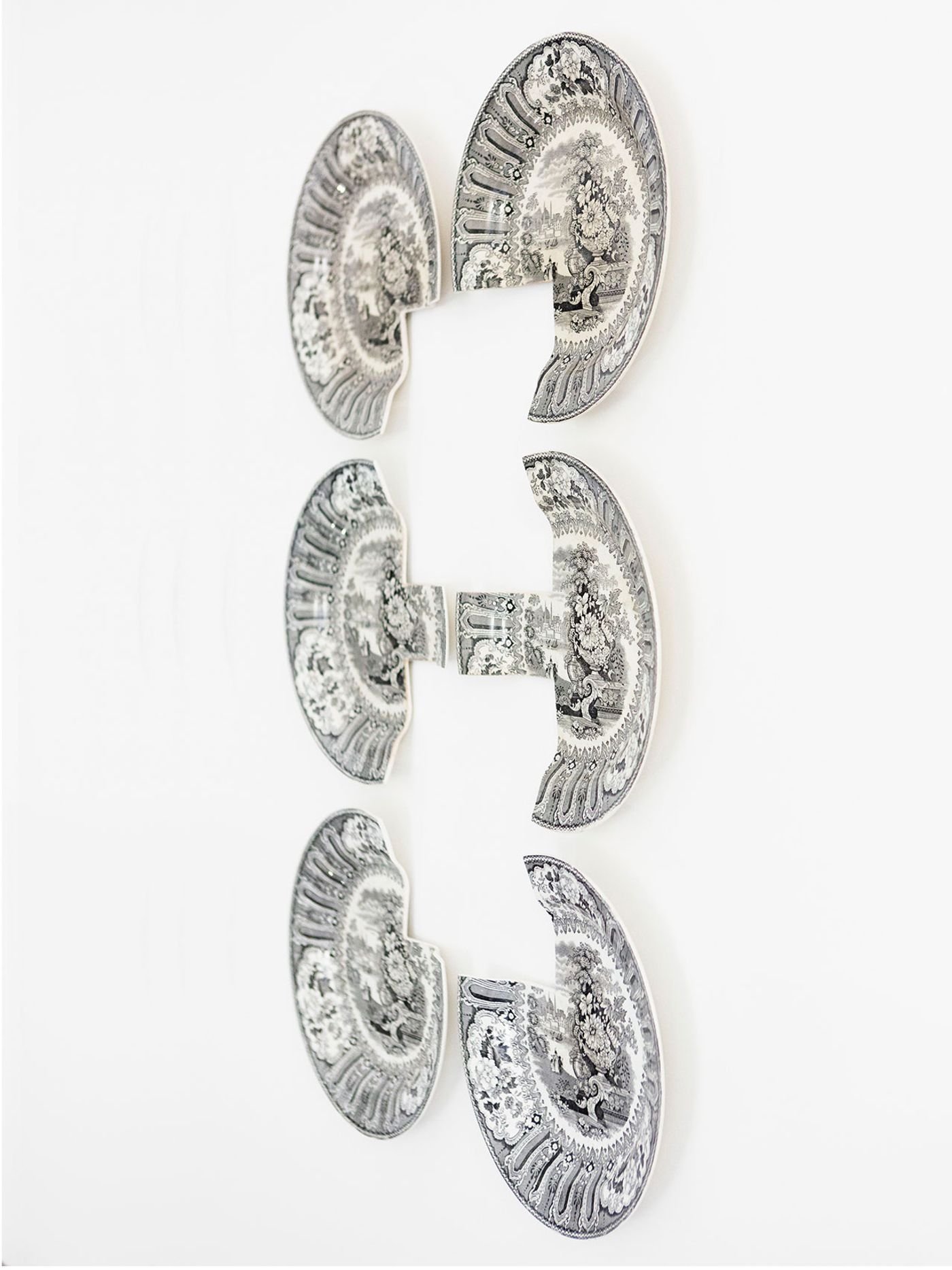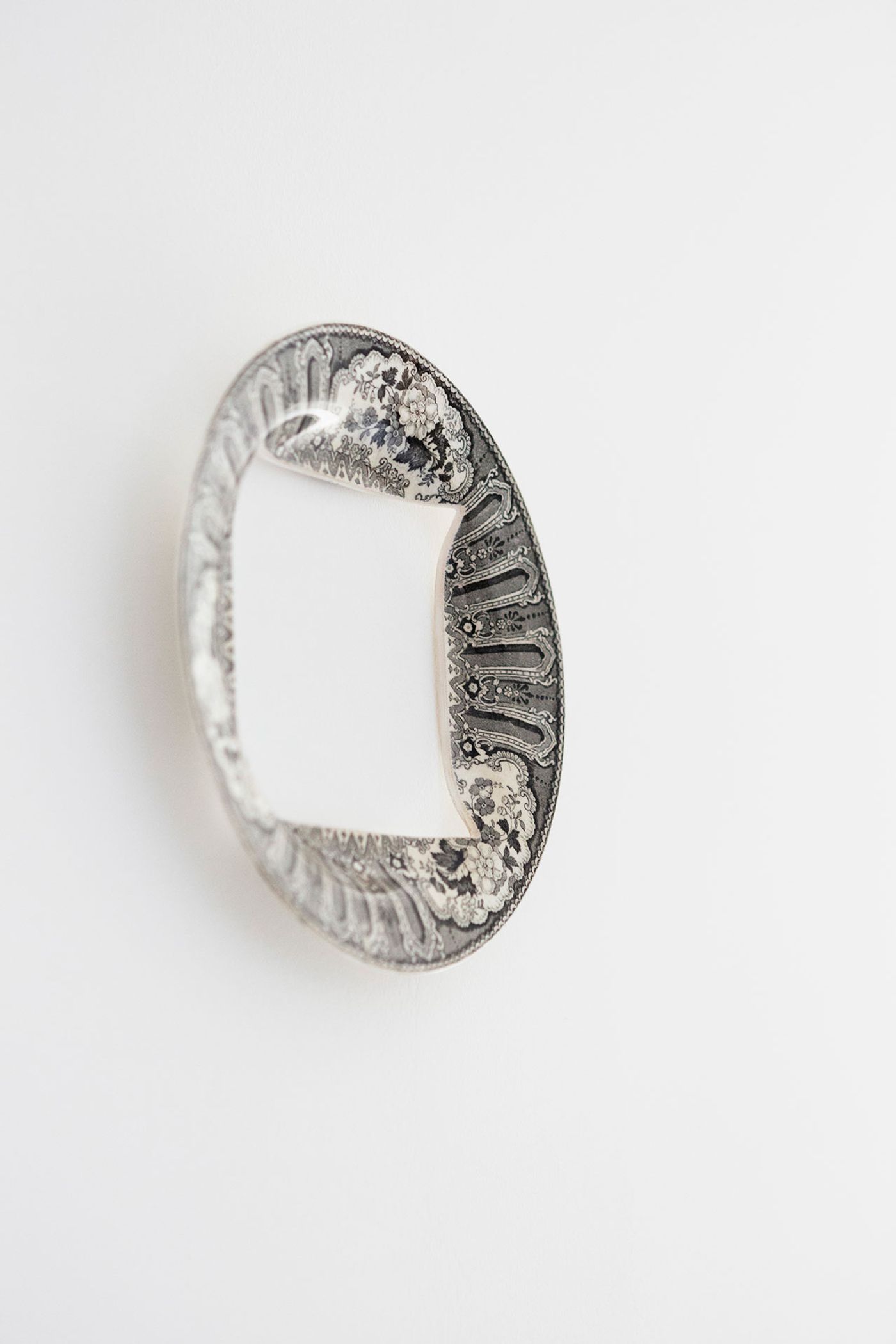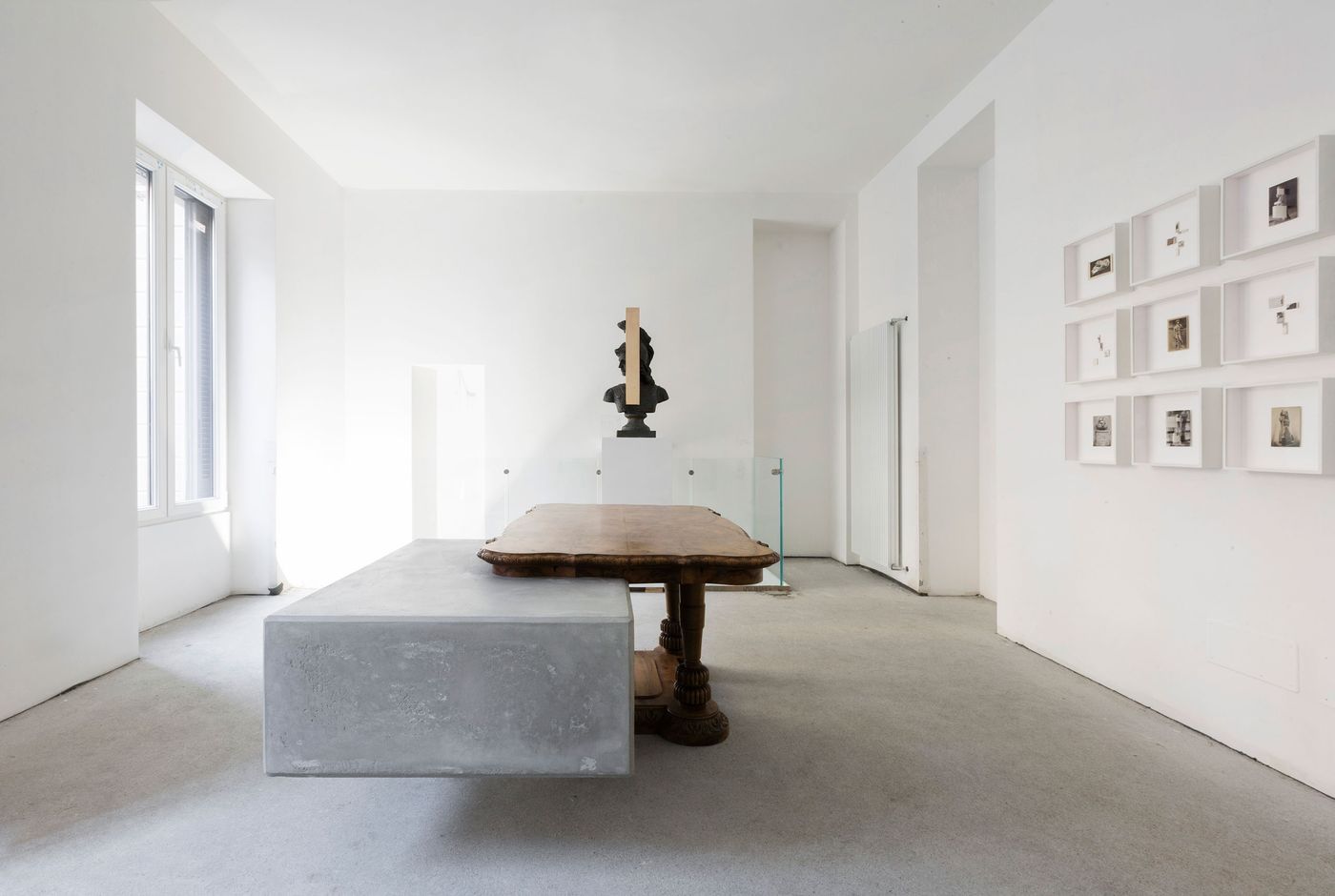
The Law of Past Experience and The Sculptural Chimeras of Studio Nucleo’s Boolean Series
Words by Eric David
Location
Milan, Italy
The Law of Past Experience and The Sculptural Chimeras of Studio Nucleo’s Boolean Series
Words by Eric David
Milan, Italy
Milan, Italy
Location
Boolean is a series of hybrid sculptures that Turin-based art collective Studio Nucleo has created by coupling disparate elements like vintage furniture and cast concrete based on the application of Boolean operators. The series is currently being showcased at FuturDome in Milan — a turn of the 20th century, Art Nouveau building that has been renovated by the International Institute of Futurist Studies into an experimental art space.
Boolean logic, named after English mathematician and computer pioneer George Boole, established the use of operators like “NOT”, “OR” and “AND” that we now use in web searches. It is precisely the application of such operations of subtraction, intersection and union that Nucleo unleashes upon a trove of vintage artefacts like antique timber furniture, bronze sculptures and ceramic plates which were selected from the furnishings of a 1940’s apartment.
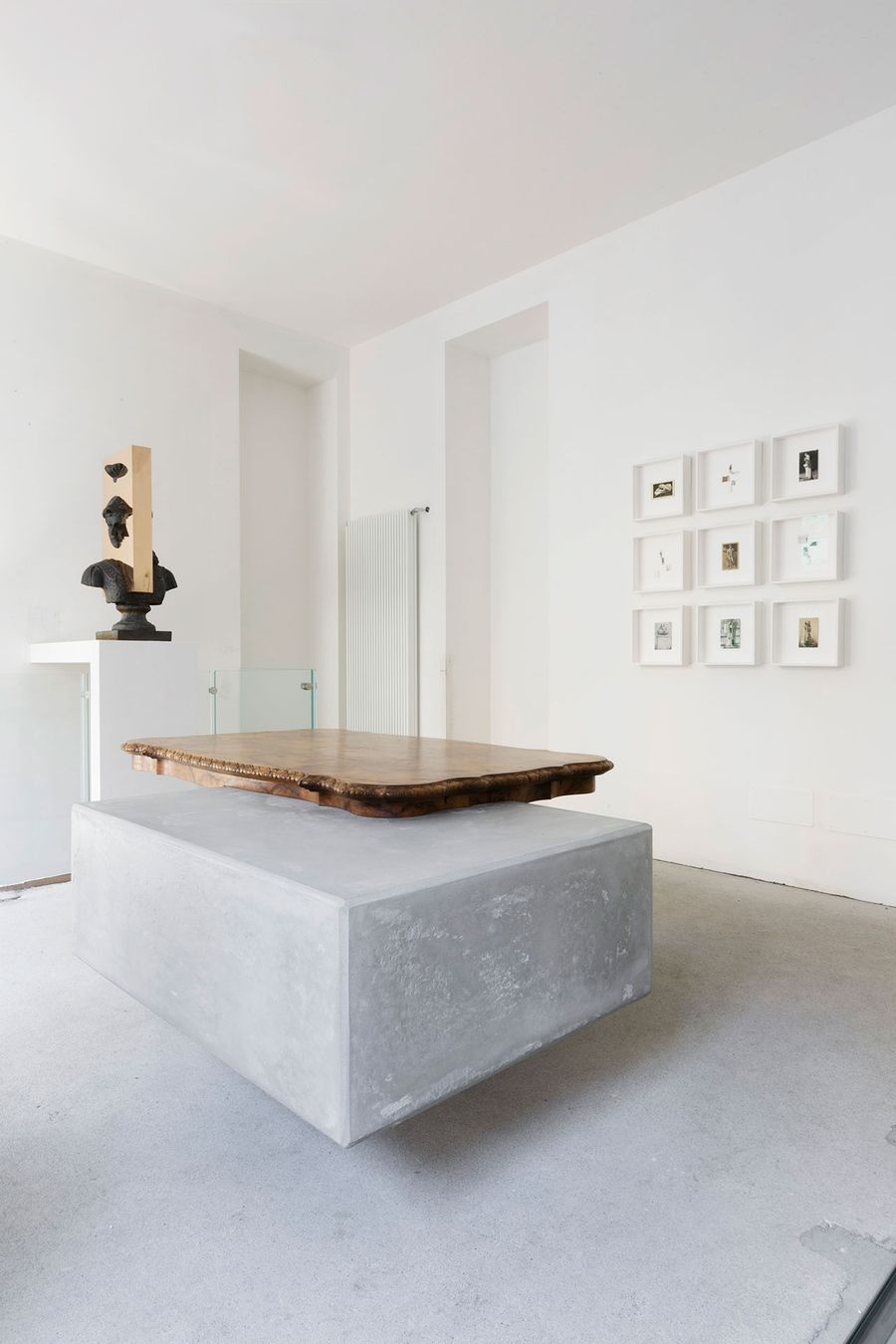
Nucleo (Piergiorgio Robino + Marzia Ricci), “Boolean” And (Table), 2017. Concrete, vintage furniture, 204 x 142 x 80h cm. Unique piece. Photo by Studio Pepe Fotografia.
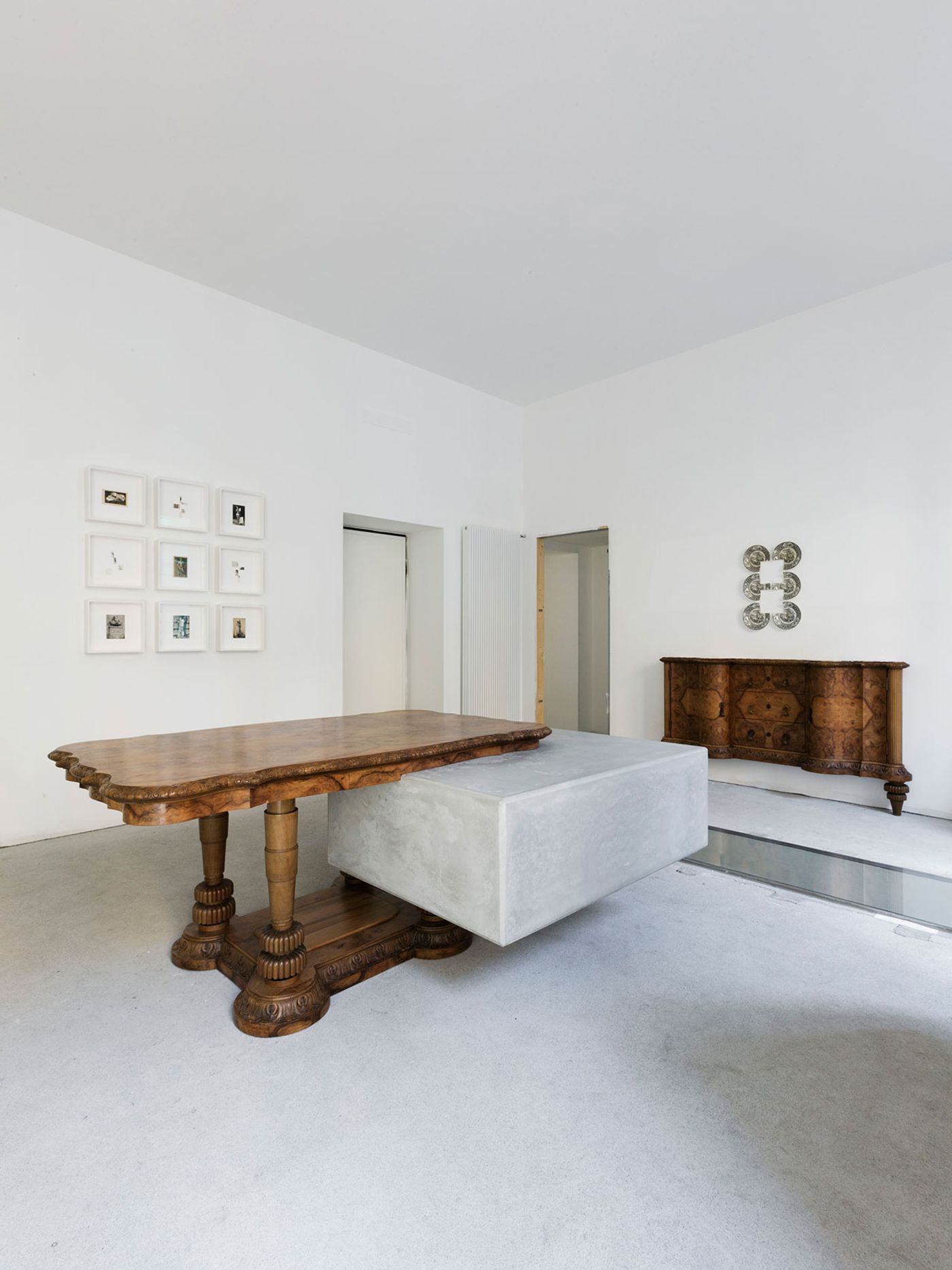
Nucleo (Piergiorgio Robino + Marzia Ricci), “Boolean” And (Table), 2017. Concrete, vintage furniture, 204 x 142 x 80h cm. Unique piece. Photo by Studio Pepe Fotografia.
The sculptural pieces produced through these operations are enthralling: a leather-upholstered chair is pierced by a concrete mass that magically hovers above the ground, an ornate wooden footboard is bisected by a thin concrete slab, while a slender wooden cabinet has been cut in half, its top part resting on the ground as if the rest of its body has been sunk into the floor, while a concrete block has taken its place on top of the cabinet’s lower half. Perceptually, the resulting artworks, which also include vintage sculptures that have been merged with polished bronze blocks, are not so much the product of bringing together two distinct elements but rather the hybrid offspring of their physical union.
Other exhibits are products of subtraction like the vintage veneer commode that has been robbed of its depth, the remaining sliver exhibited as a timber bas-relief, and the series of ceramic plates that feature geometric cut-outs. In all cases, although the operations of addition and subtraction seem effortless, the technical skill required to produce such flawlessly constructed, one-of-a-kind pieces is extraordinary.
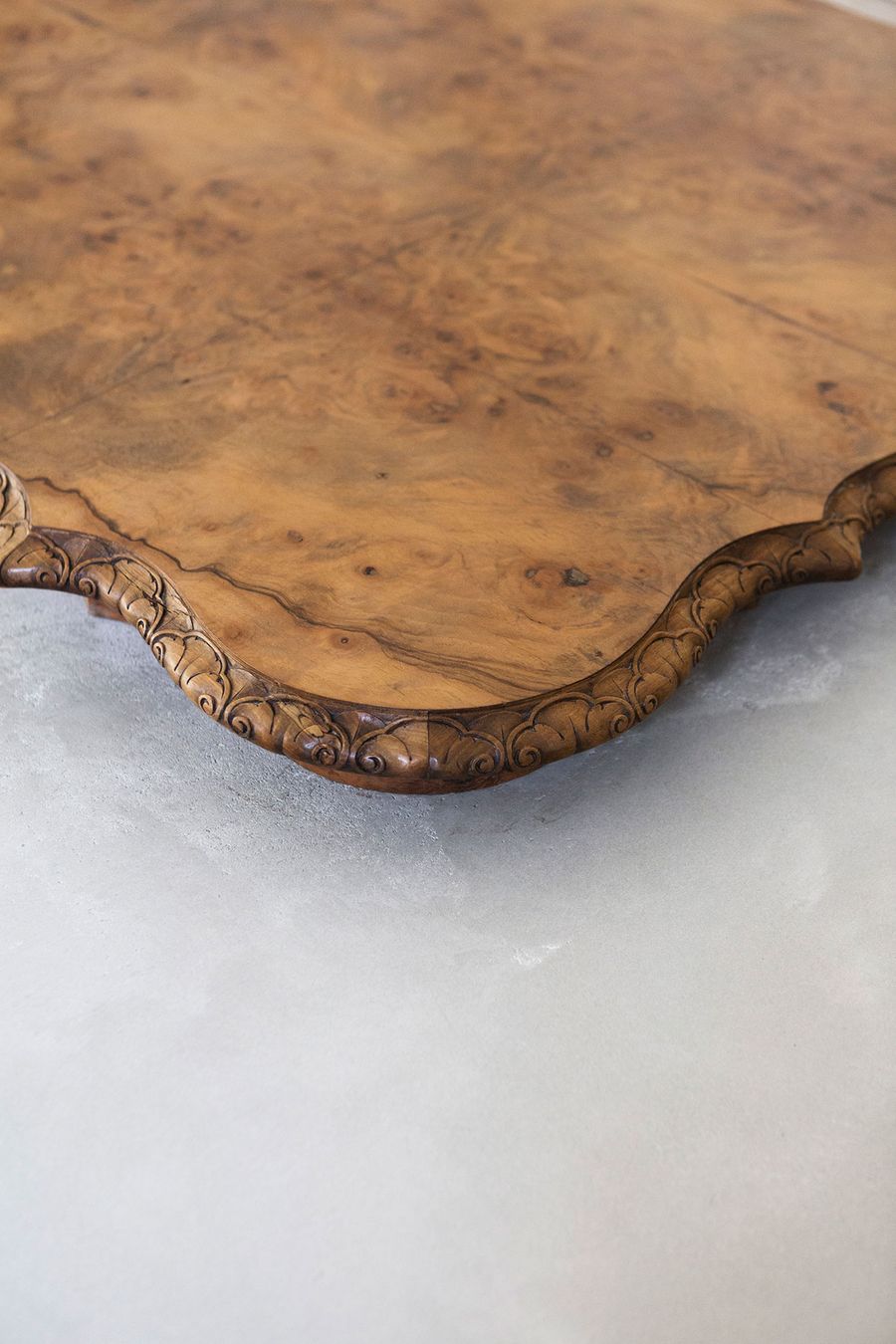
Nucleo (Piergiorgio Robino + Marzia Ricci), “Boolean” And (Table), 2017. Concrete, vintage furniture, 204 x 142 x 80h cm. Unique piece. Photo by Studio Pepe Fotografia.
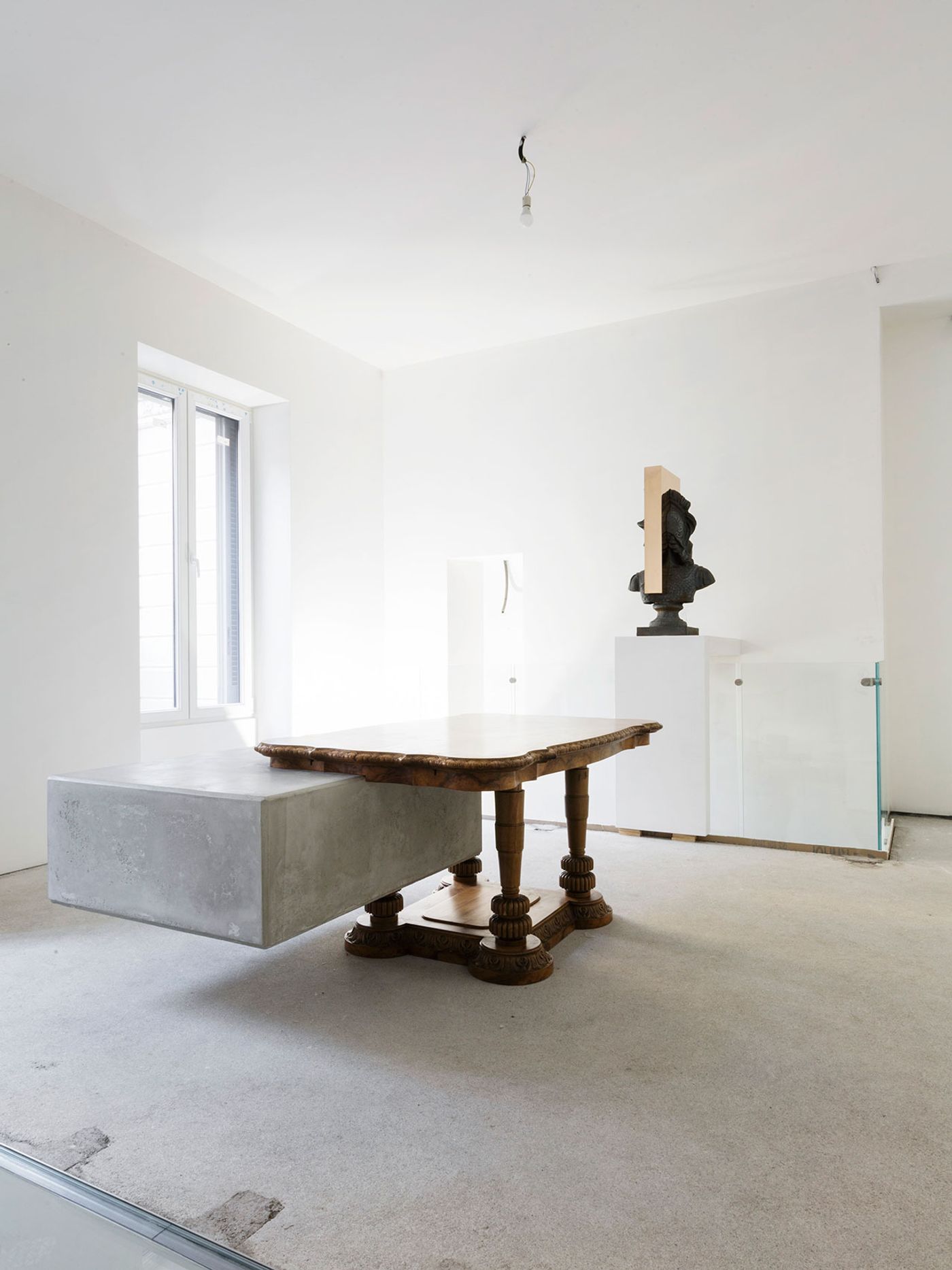
Nucleo (Piergiorgio Robino + Marzia Ricci), “Boolean” And (Table), 2017. Concrete, vintage furniture
204 x 142 x 80h cm. Unique piece. Photo by Studio Pepe Fotografia.

Nucleo (Piergiorgio Robino + Marzia Ricci), “Boolean” And (Table), 2017. Concrete, vintage furniture, 204 x 142 x 80h cm. Unique piece. Photo by Studio Pepe Fotografia.
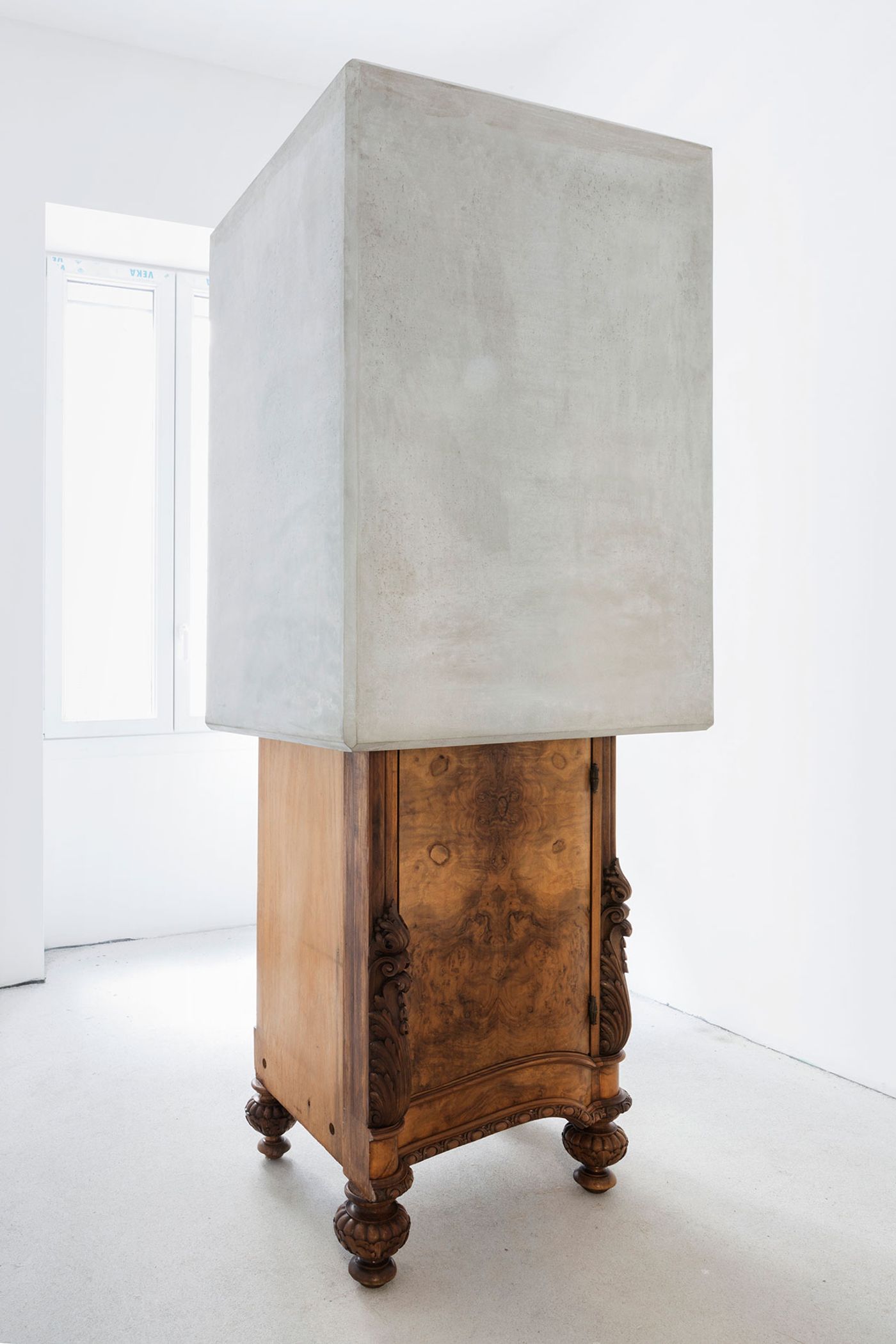
Nucleo (Piergiorgio Robino + Marzia Ricci), “Boolean” And (Cabinet), 2017. Concrete, vintage furniture, 72 x 80 x 218h cm. Unique piece in an edition 1+1. Photo by Studio Pepe Fotografia.
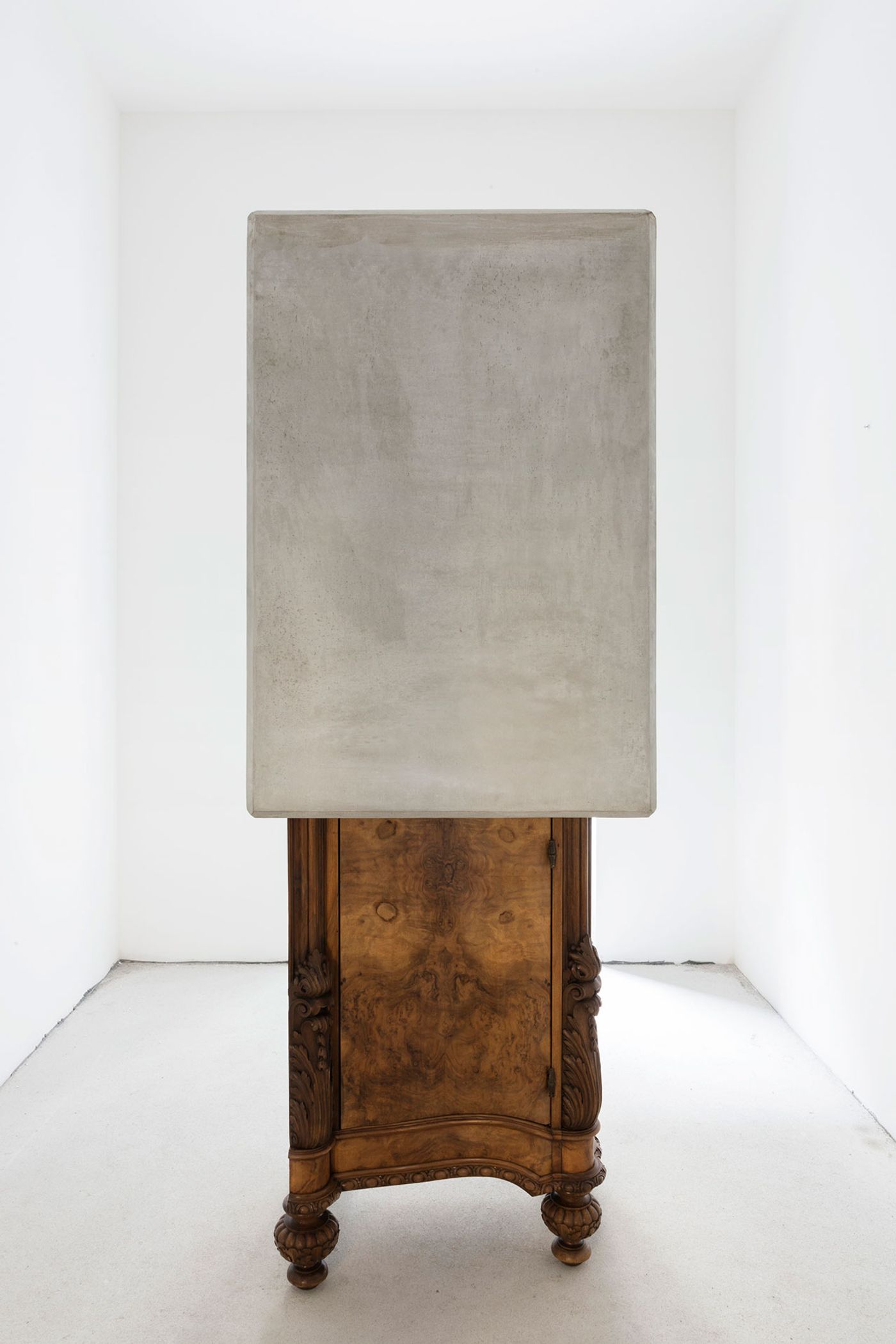
Nucleo (Piergiorgio Robino + Marzia Ricci), “Boolean” And (Cabinet), 2017. Concrete, vintage furniture, 72 x 80 x 218h cm. Unique piece in an edition 1+1. Photo by Studio Pepe Fotografia.
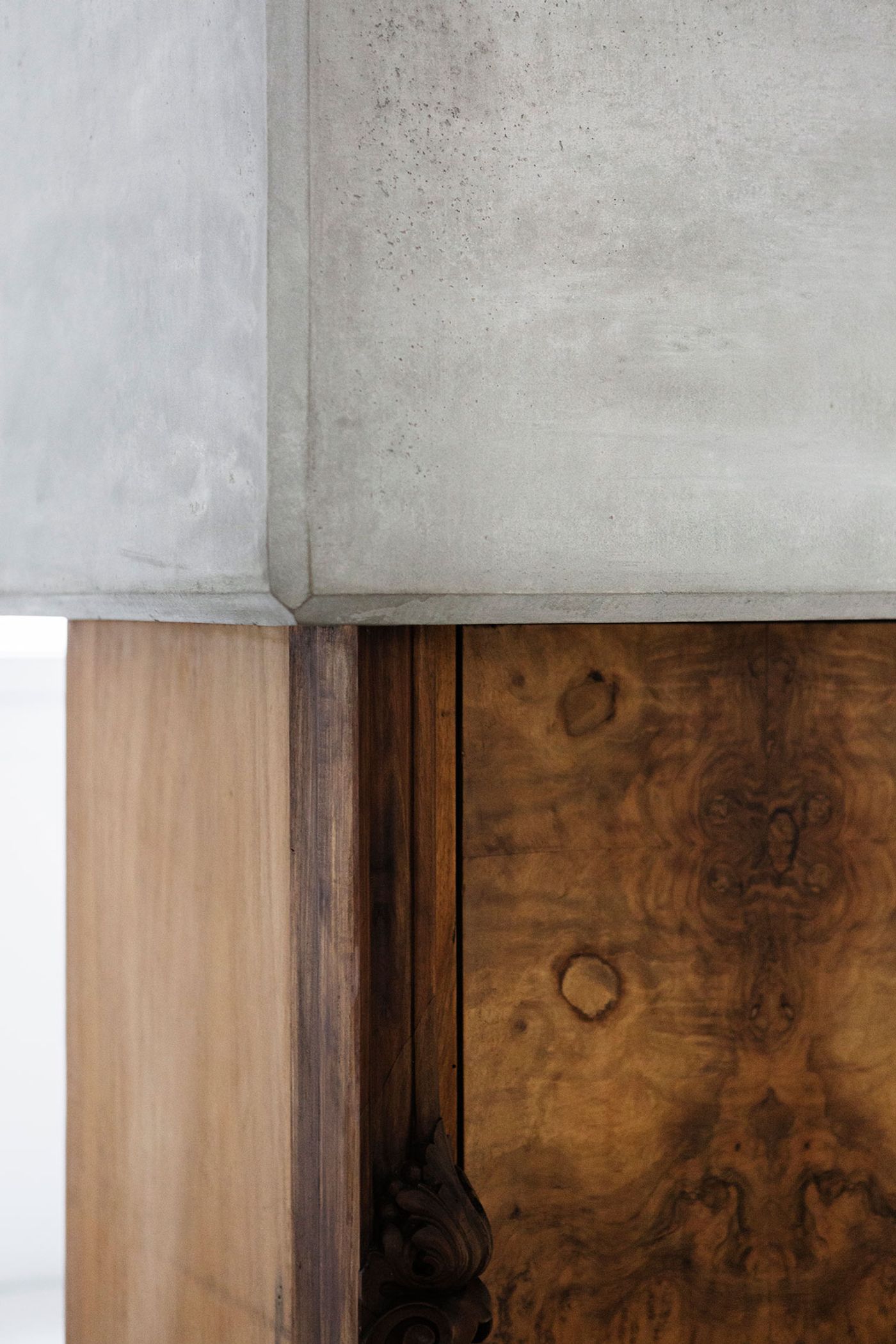
Nucleo (Piergiorgio Robino + Marzia Ricci), “Boolean” And (Cabinet), 2017. Concrete, vintage furniture, 72 x 80 x 218h cm. Unique piece in an edition 1+1. Photo by Studio Pepe Fotografia.
The exhibition, which is curated by Atto Belloli Ardessi and Ginevra Bria, and runs until 25 November 2017, is titled “The Law of Past Experience”, a reference to one of the best-known principles of Gestalt psychology. This particular law, which postulates that under certain circumstances visual stimuli are categorized according to past experiences, underpins the Boolean series. In practical terms, it means that when our field of vision encounters a group of unfamiliar elements, our brain “sees” shapes or figures according to our mnemonic vocabulary, sometimes completing or uniting what our eyes perceive as incomplete or fragmented. In this sense, Nucleo encourages viewers to use their imagination to reconfigure the strange yet familiar objects in front of them according to their own subconscious templates.
In computer science, Boolean signifies a data type that has two possible values: 0 (false) and 1 (true). Therefore, the two diametrically-different components of Nucleo’s hybrid sculptures can also be said to represent contrasting concepts such as falsehood and truthfulness, past and present, and shape and abstraction. It is up to the viewer of course to determine which value corresponds to which element. More than that, the sculptural union of such opposing concepts, and the resulting refutation of their absolute nature, can thus be interpreted to symbolize the subjective nature of reality as we experience it.
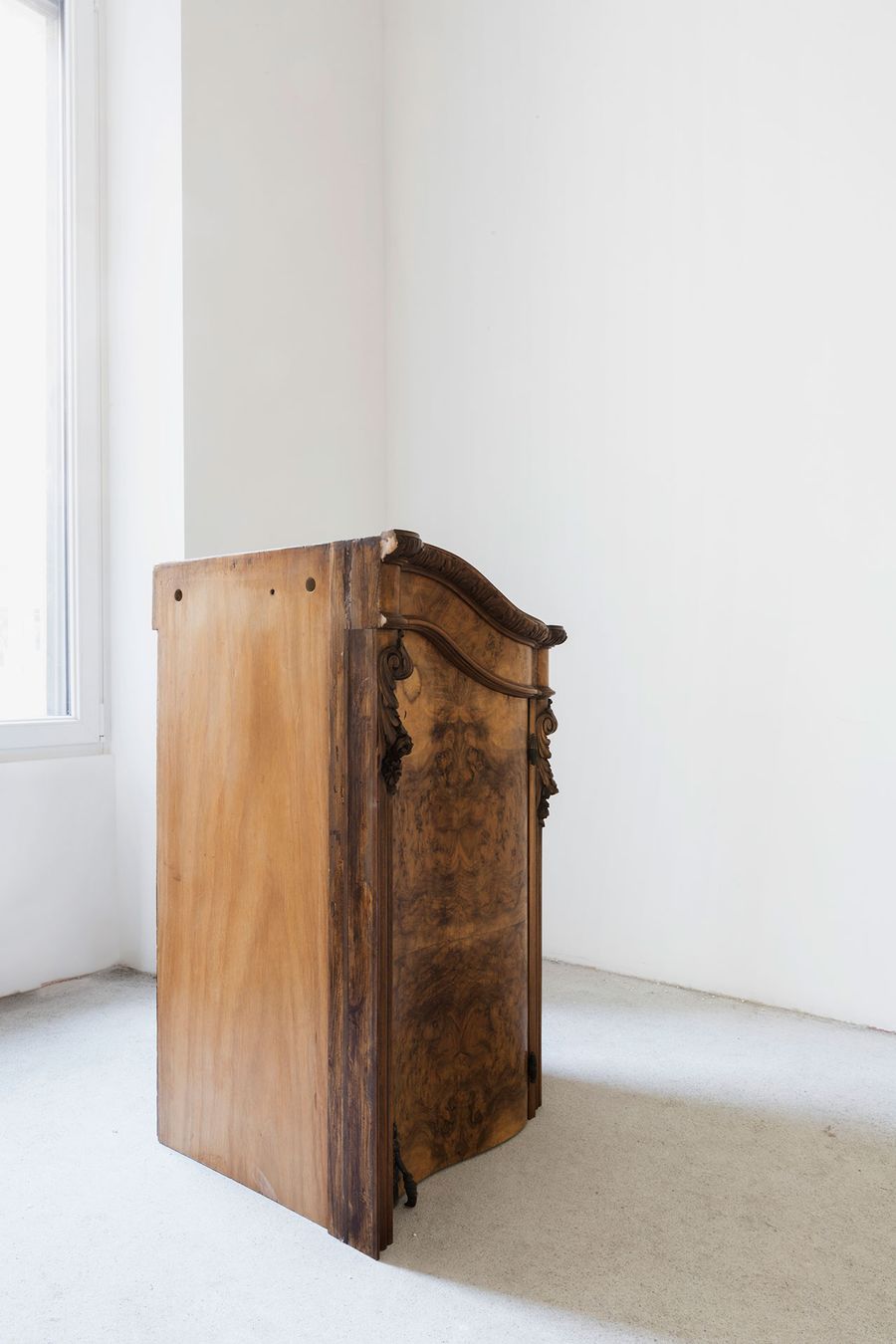
Nucleo (Piergiorgio Robino + Marzia Ricci), “Boolean” Not (Cabinet), 2017. Concrete, vintage furniture, 61 x 67,5 x 108h cm. Unique piece in an edition 1+1. Photo by Studio Pepe Fotografia.
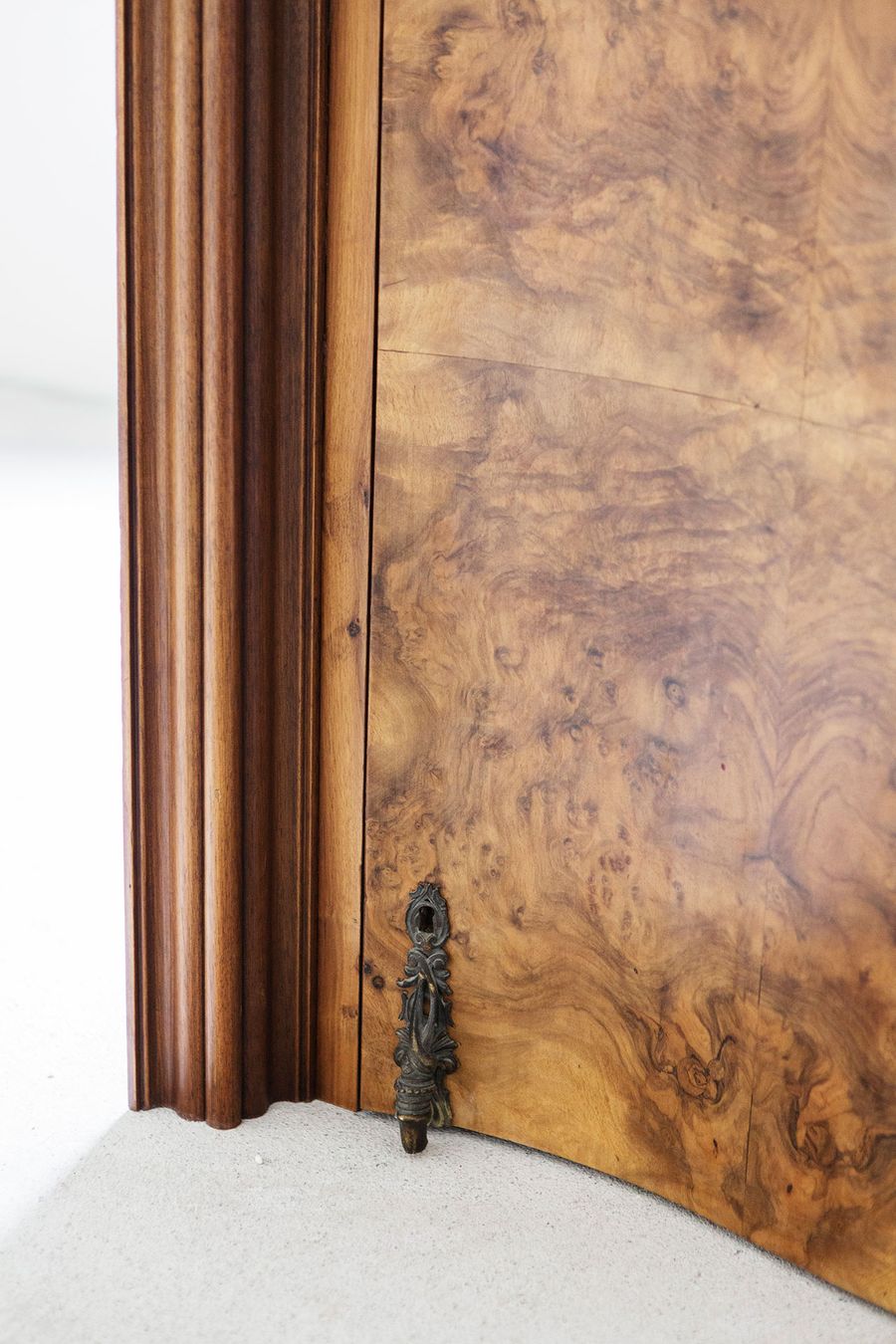
Nucleo (Piergiorgio Robino + Marzia Ricci), “Boolean” Not (Cabinet), 2017. Concrete, vintage furniture, 61 x 67,5 x 108h cm. Unique piece in an edition 1+1. Photo by Studio Pepe Fotografia.

Nucleo (Piergiorgio Robino + Marzia Ricci), “Boolean” Not (Cabinet), 2017. Concrete, vintage furniture, 61 x 67,5 x 108h cm. Unique piece in an edition 1+1. Photo by Studio Pepe Fotografia.
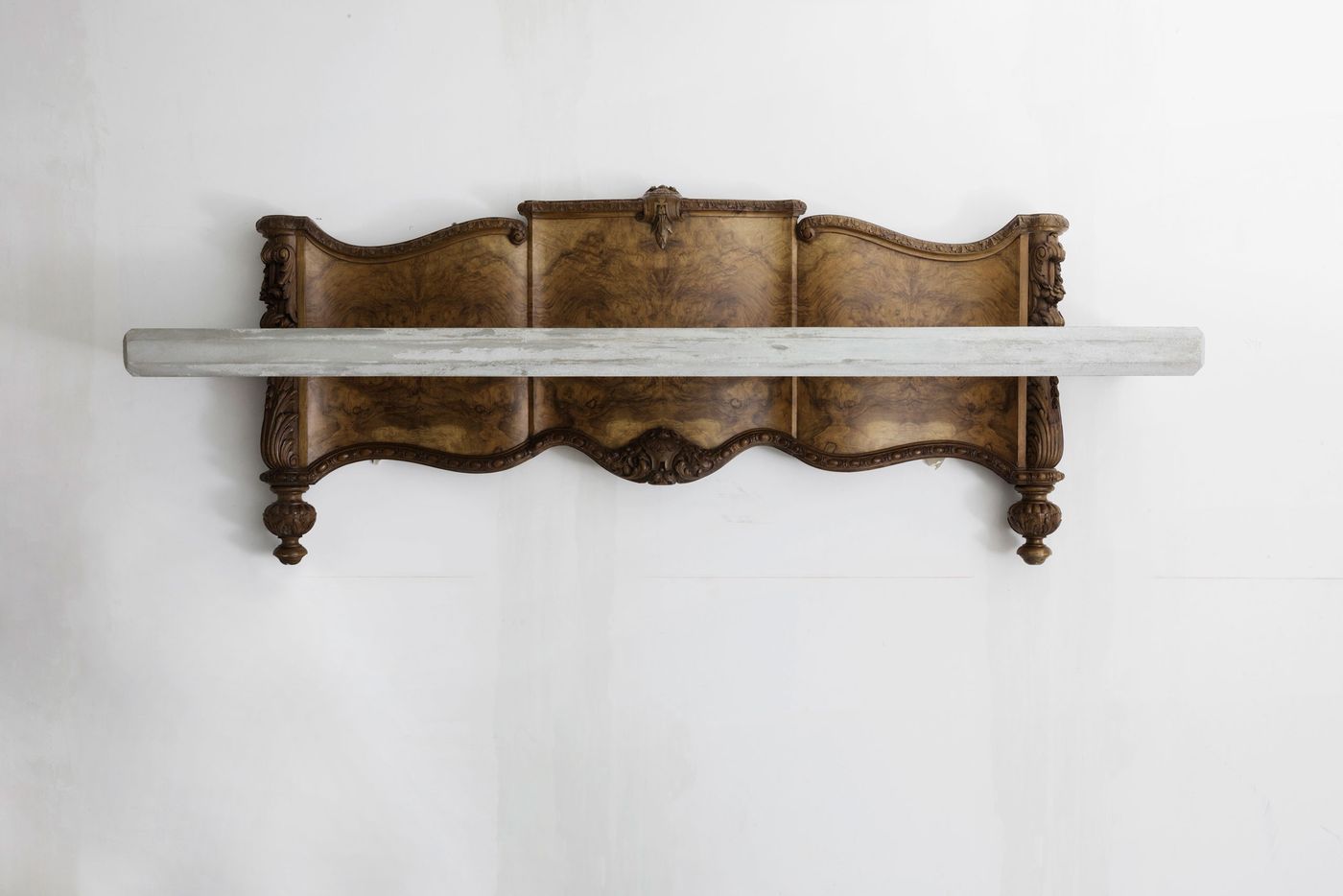
Nucleo (Piergiorgio Robino + Marzia Ricci), “Boolean” And (Headboard), 2017. Concrete, vintage furniture, 182 x 15 x 155h cm. Unique piece. Photo by Studio Pepe Fotografia.
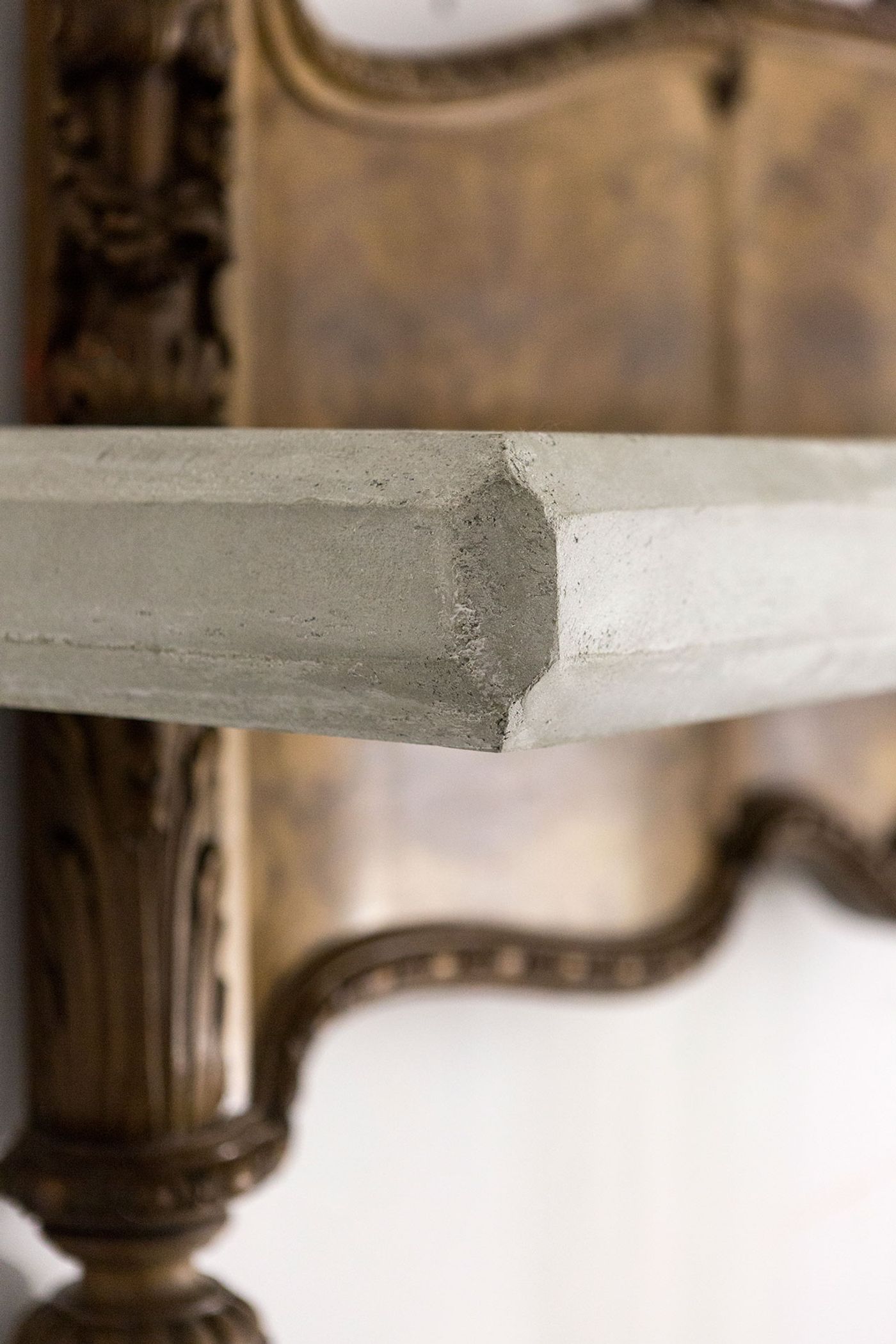
Nucleo (Piergiorgio Robino + Marzia Ricci), “Boolean” And (Headboard), 2017. Concrete, vintage furniture, 182 x 15 x 155h cm. Unique piece. Photo by Studio Pepe Fotografia.
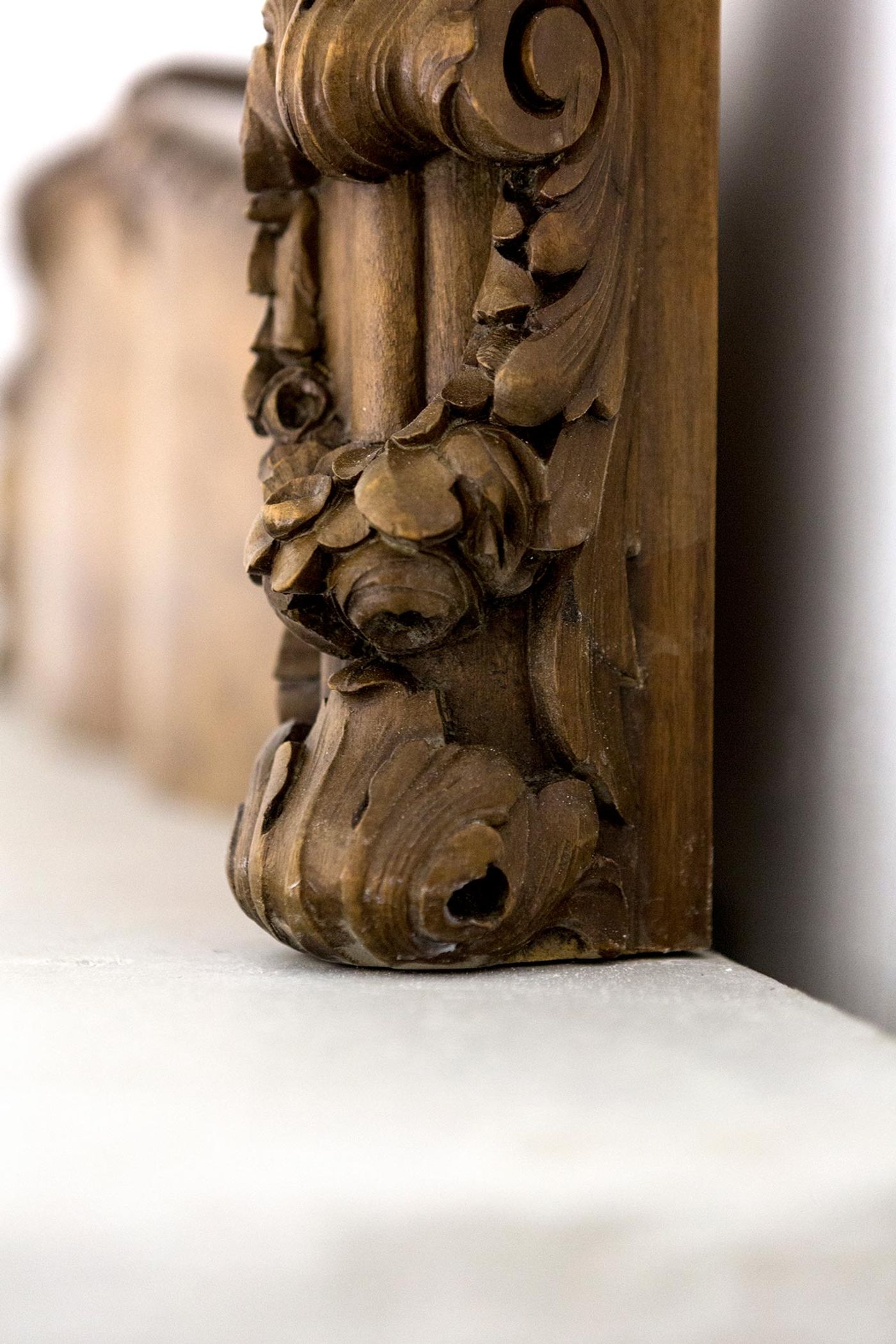
Nucleo (Piergiorgio Robino + Marzia Ricci), “Boolean” And (Headboard), 2017. Concrete, vintage furniture, 182 x 15 x 155h cm. Unique piece. Photo by Studio Pepe Fotografia.
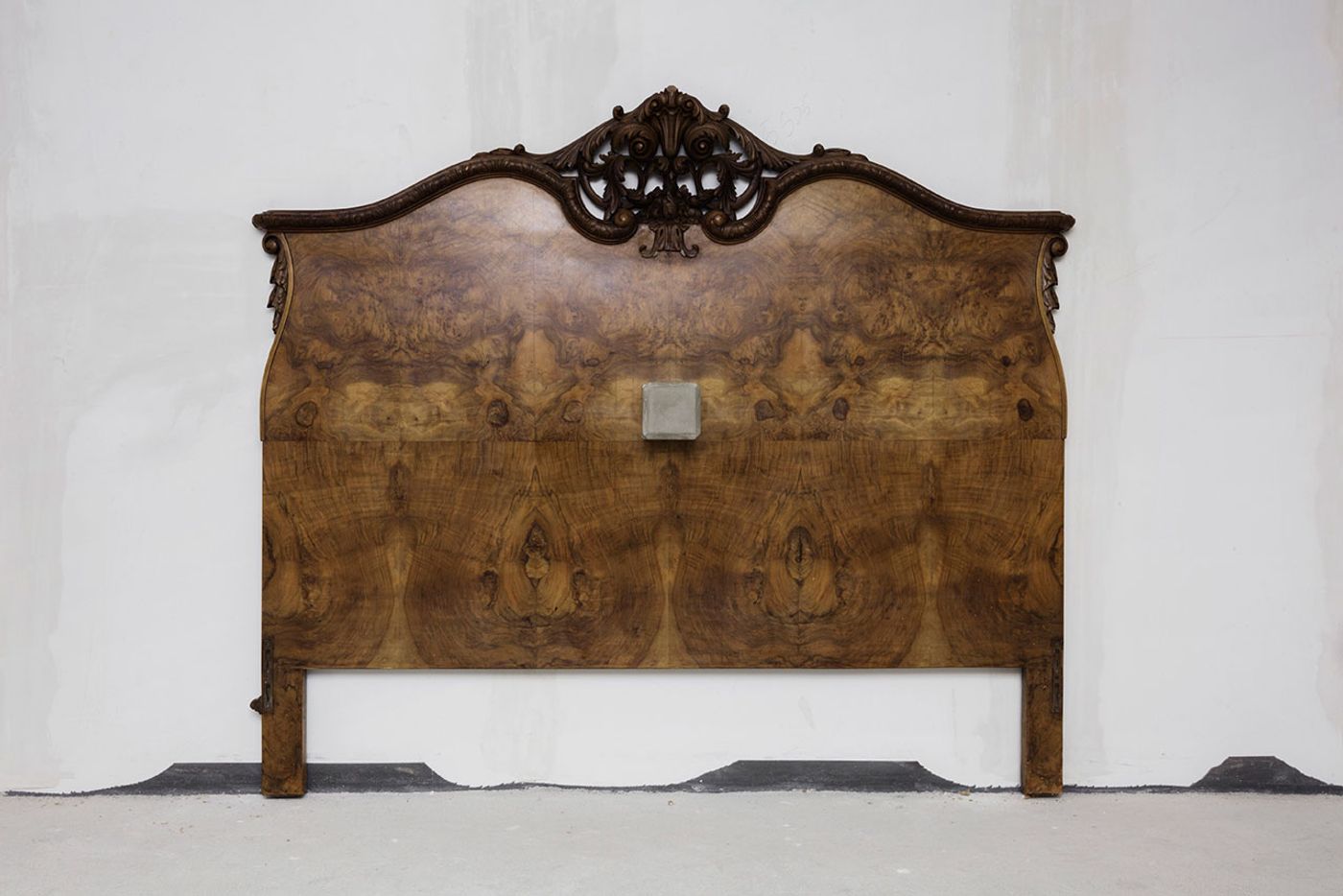
Nucleo (Piergiorgio Robino + Marzia Ricci), “Boolean” And (Footboard), 2017. Concrete, vintage furniture, 220 x 40 x 83h cm. Unique piece. Photo by Studio Pepe Fotografia.
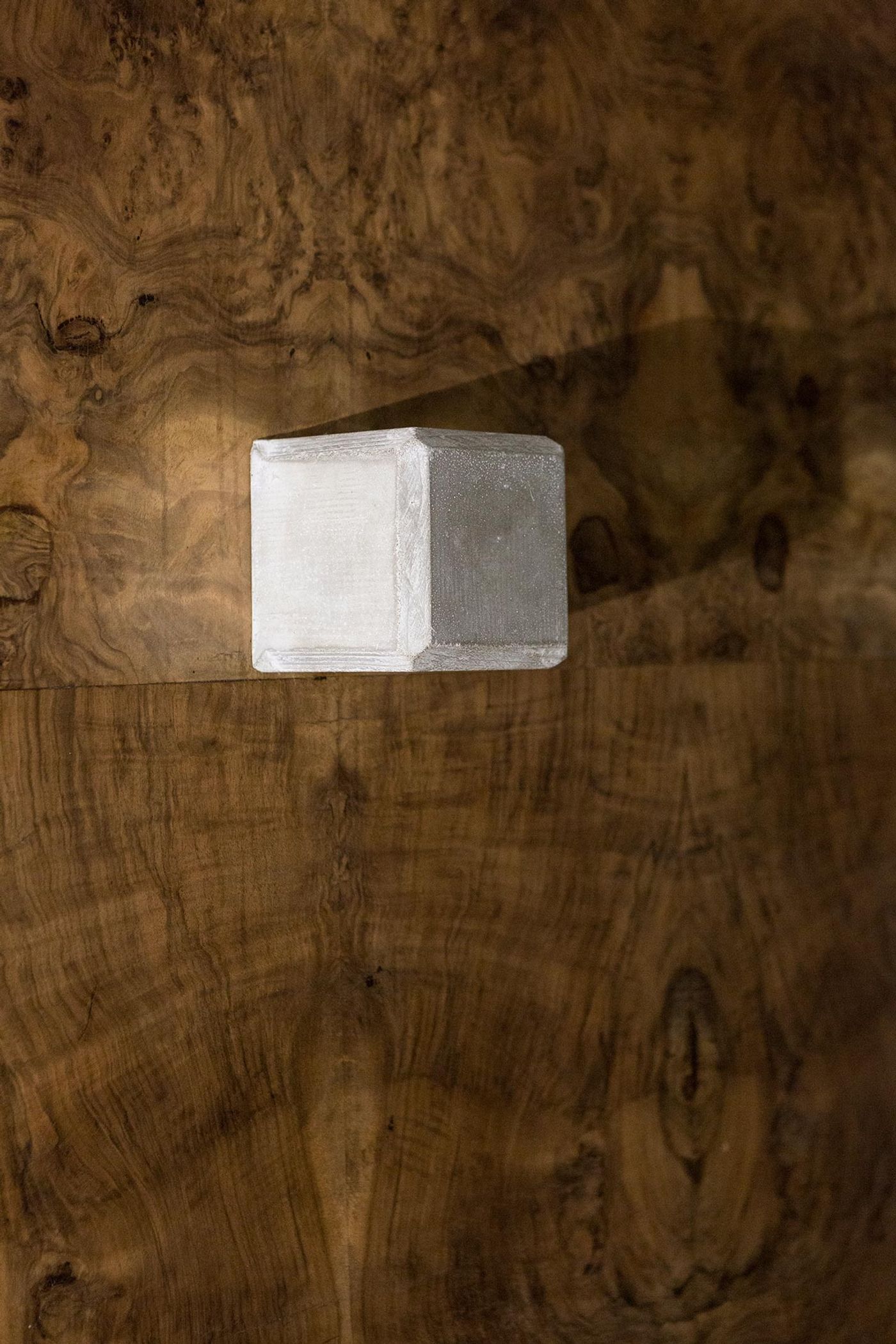
Nucleo (Piergiorgio Robino + Marzia Ricci), “Boolean” And (Footboard), 2017. Concrete, vintage furniture, 220 x 40 x 83h cm. Unique piece. Photo by Studio Pepe Fotografia.
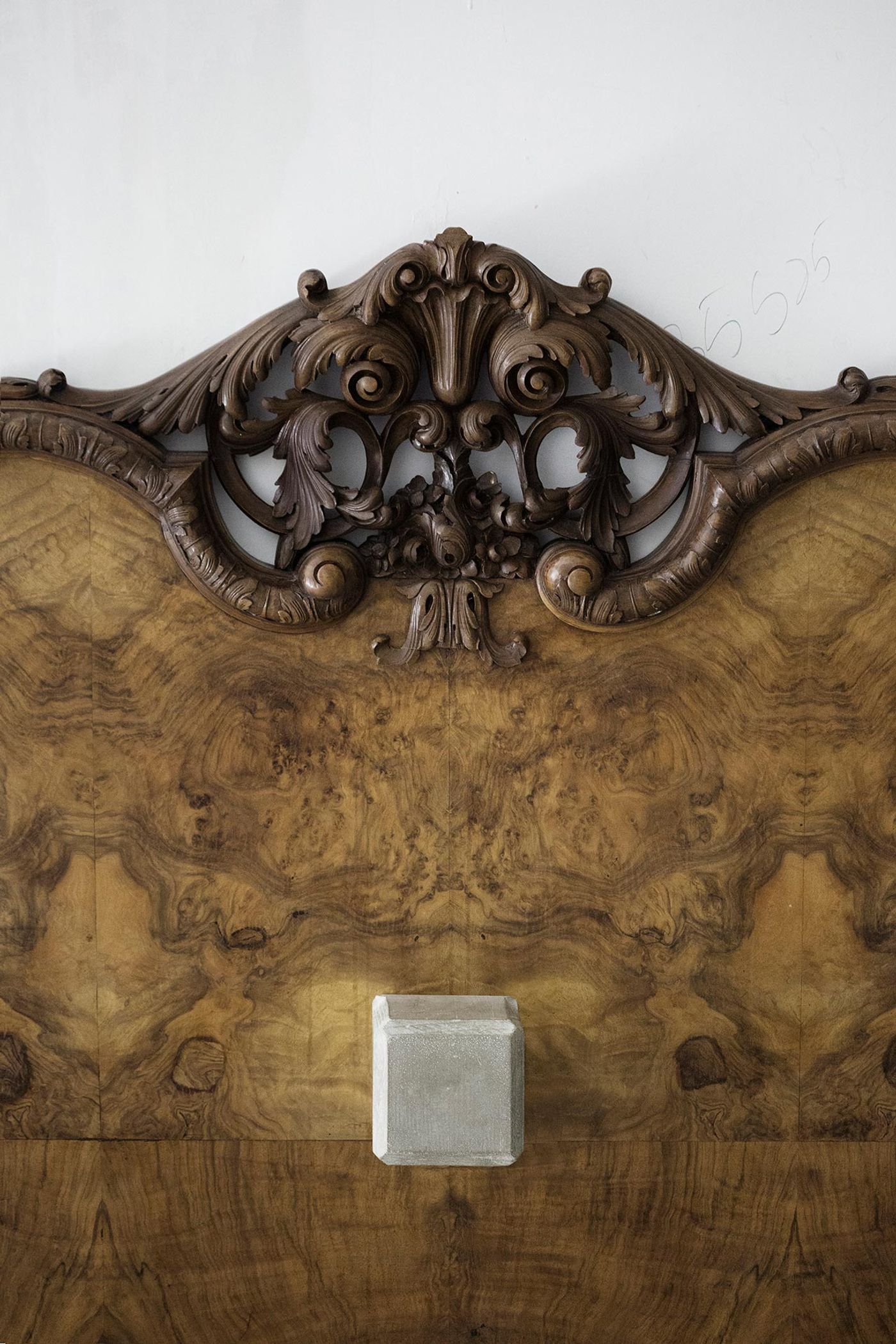
Nucleo (Piergiorgio Robino + Marzia Ricci), “Boolean” And (Footboard), 2017. Concrete, vintage furniture, 220 x 40 x 83h cm. Unique piece. Photo by Studio Pepe Fotografia.
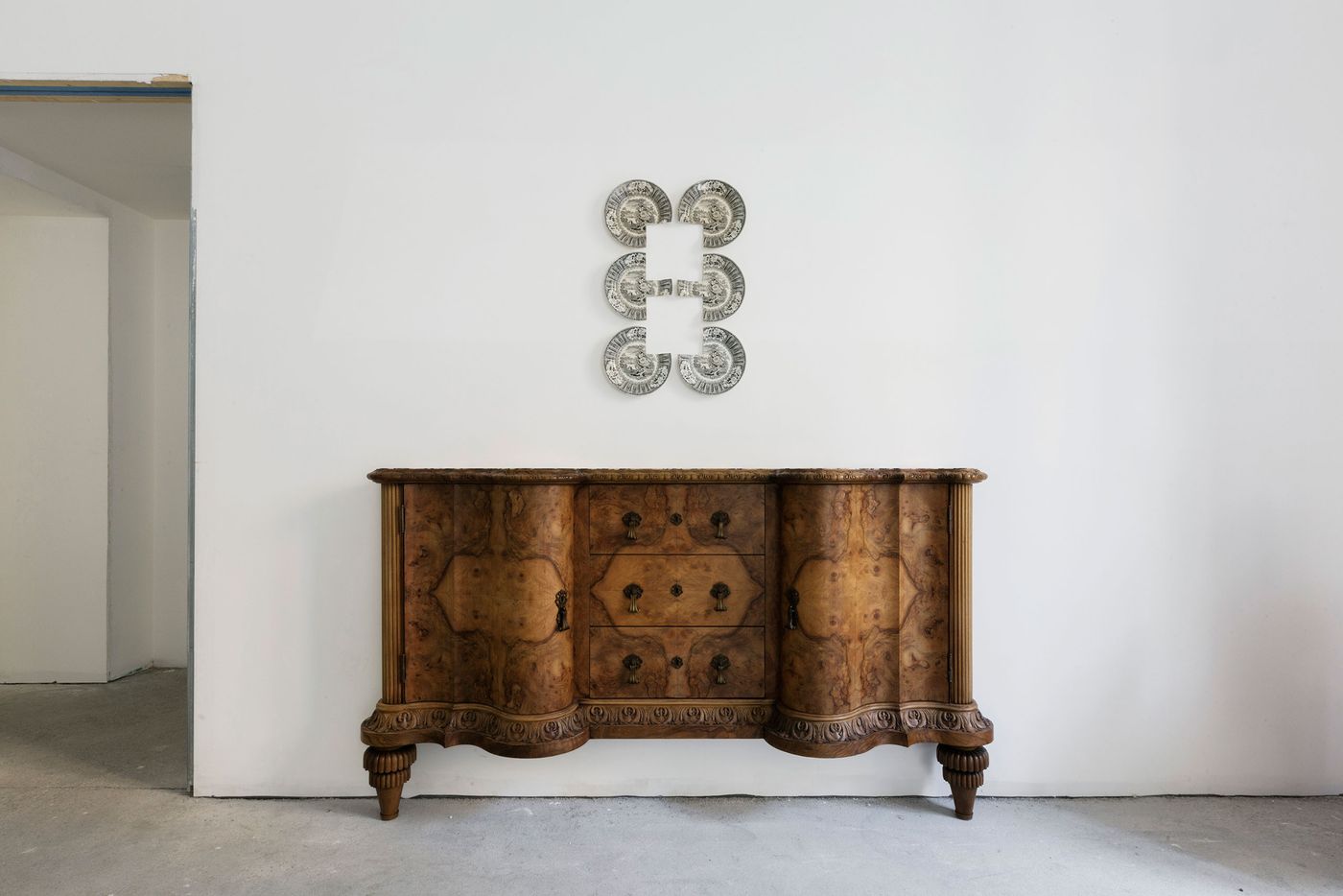
Nucleo (Piergiorgio Robino + Marzia Ricci), “Boolean” And (Headboard), 2017. Cutted vintage furniture, 176 x 27 x 100h cm. Unique piece in an edition 1+1. Photo by Studio Pepe Fotografia.

Nucleo (Piergiorgio Robino + Marzia Ricci), “Boolean” And (Headboard), 2017. Cutted vintage furniture, 176 x 27 x 100h cm. Unique piece in an edition 1+1. Photo by Studio Pepe Fotografia.

Nucleo (Piergiorgio Robino + Marzia Ricci), “Boolean” And (Headboard), 2017. Cutted vintage furniture, 176 x 27 x 100h cm. Unique piece in an edition 1+1. Photo by Studio Pepe Fotografia.
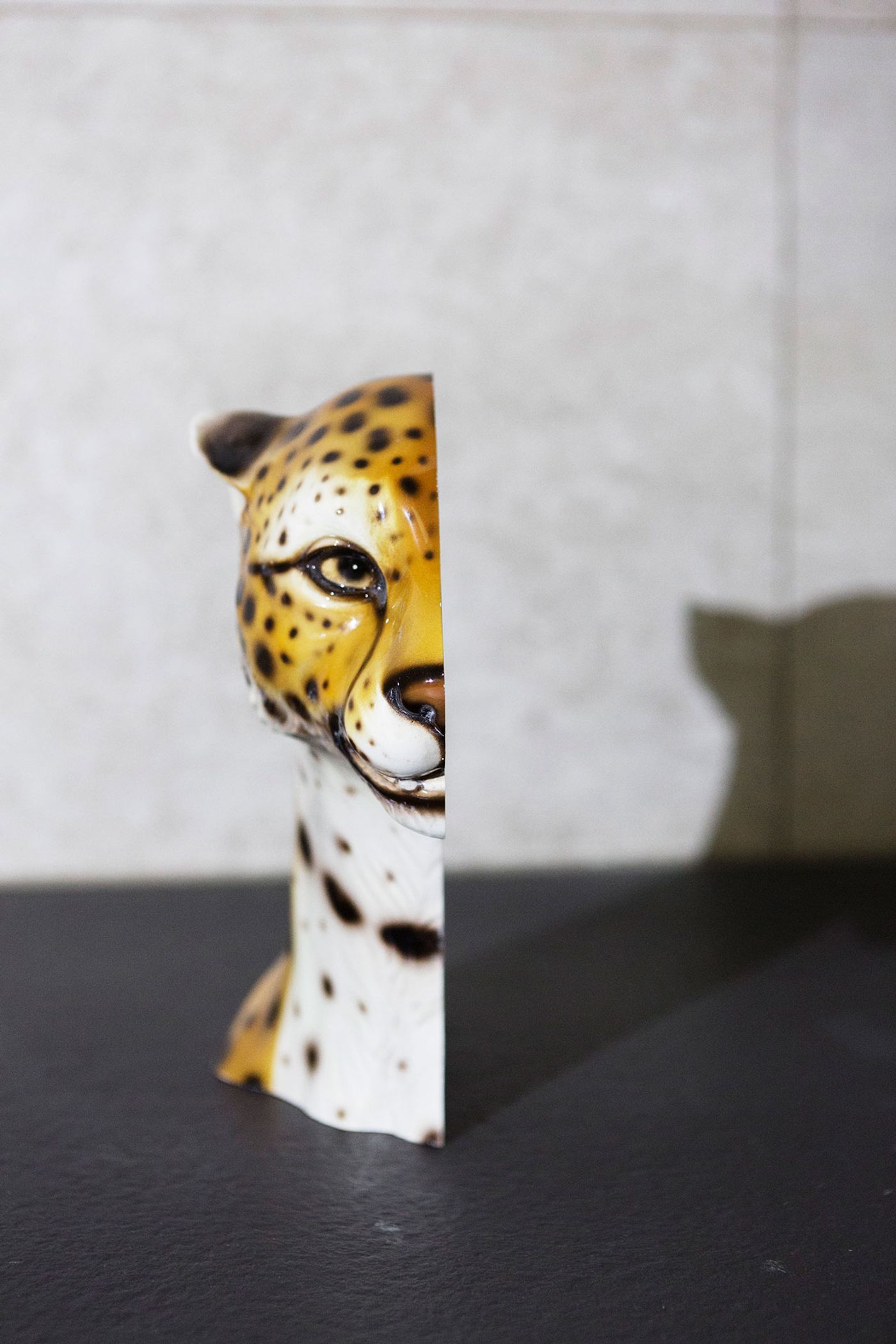
Nucleo (Piergiorgio Robino + Marzia Ricci), “Boolean” Or (Cheetah), 2017. Cut on vintage ceramic sculpture, 33 x 11 x 30h cm. Unique piece. Photo by Studio Pepe Fotografia.
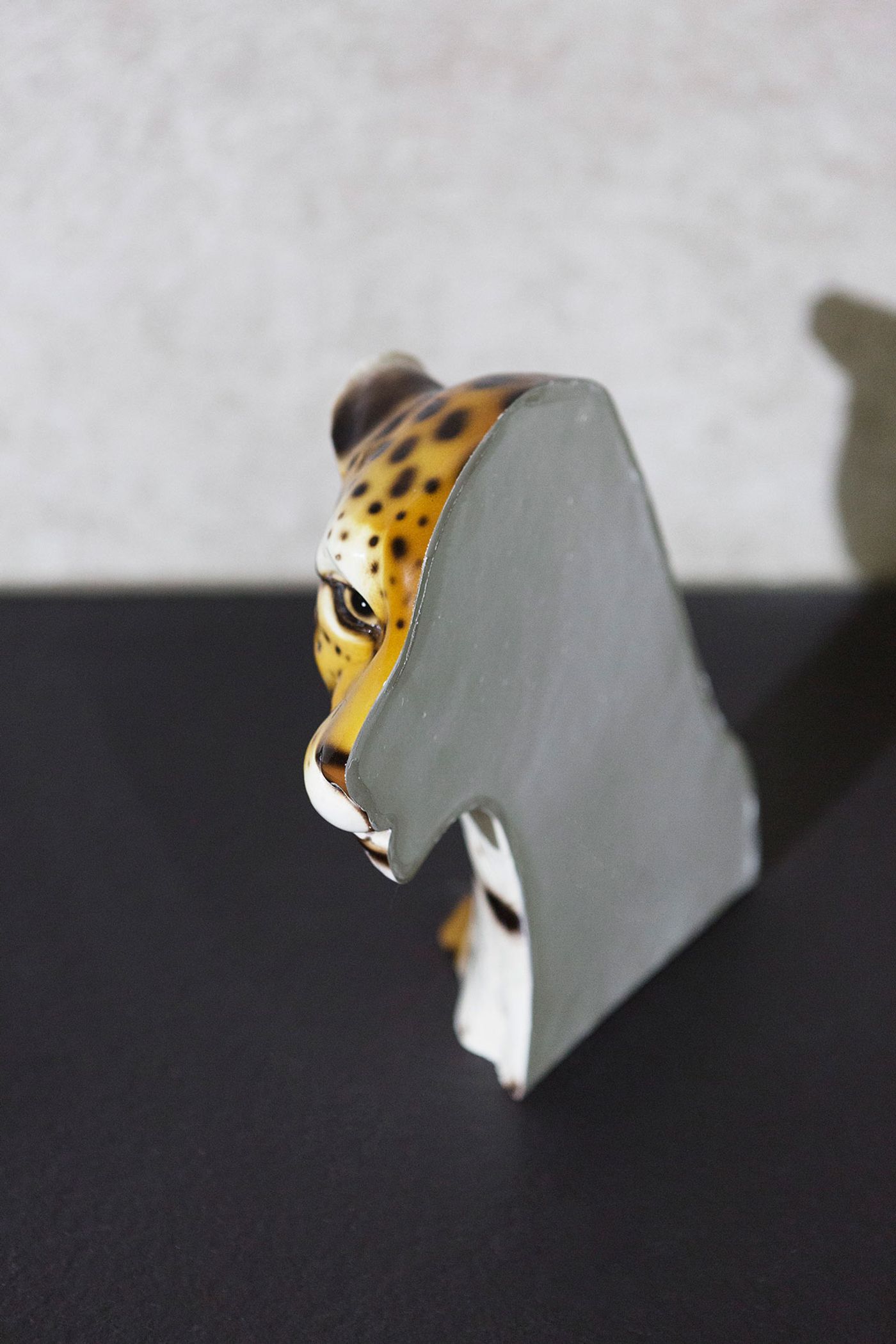
Nucleo (Piergiorgio Robino + Marzia Ricci), “Boolean” Or (Cheetah), 2017. Cut on vintage ceramic sculpture, 33 x 11 x 30h cm. Unique piece. Photo by Studio Pepe Fotografia.
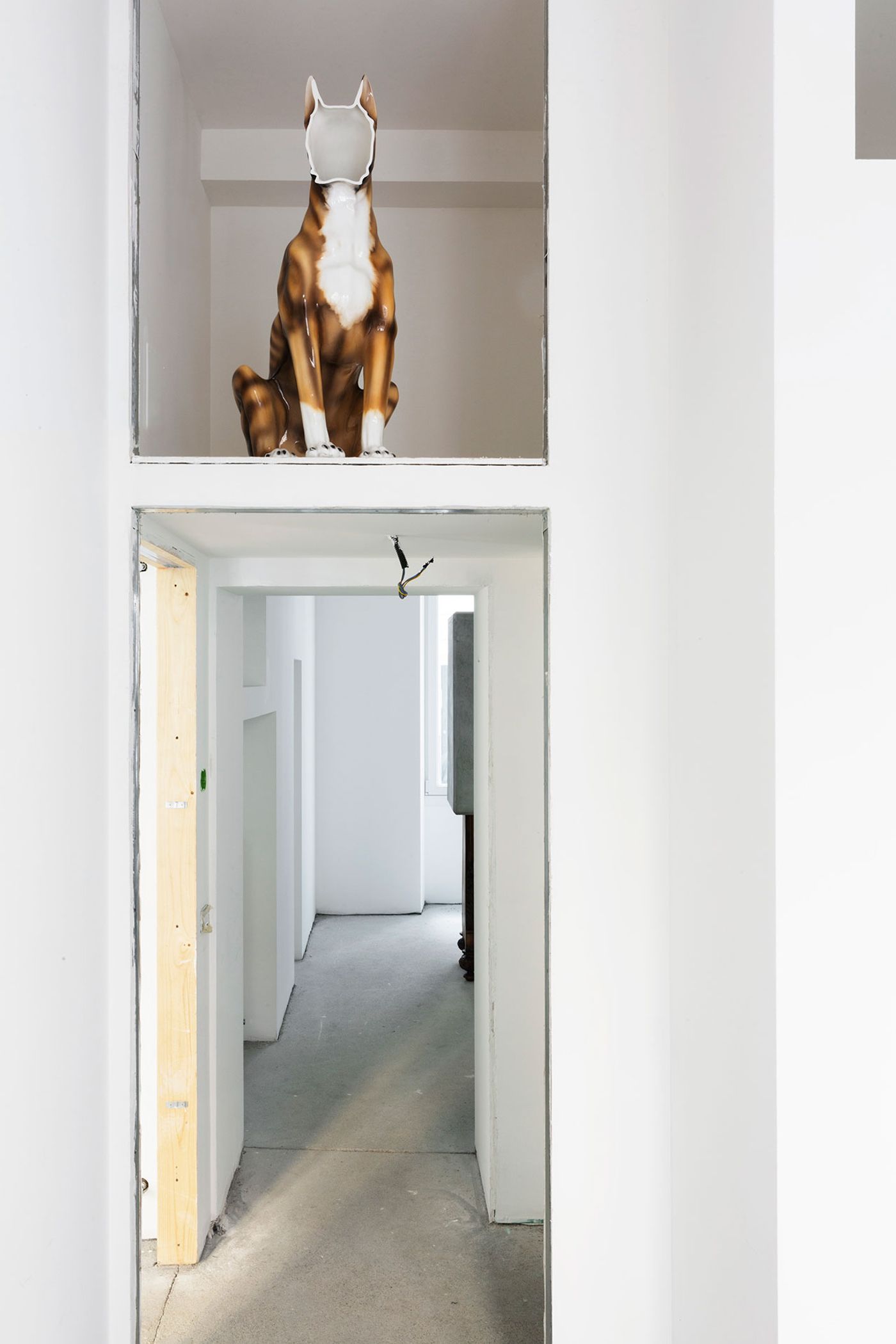
Nucleo (Piergiorgio Robino + Marzia Ricci), “Boolean” Not (Boxer), 2017. Cut on vintage ceramic sculpture, 40 x 42 x 86h cm. Unique piece in an edition 1+1. Photo by Studio Pepe Fotografia.

Nucleo (Piergiorgio Robino + Marzia Ricci), “Boolean” Not (Boxer), 2017. Cut on vintage ceramic sculpture, 40 x 42 x 86h cm. Unique piece in an edition 1+1. Photo by Studio Pepe Fotografia.
